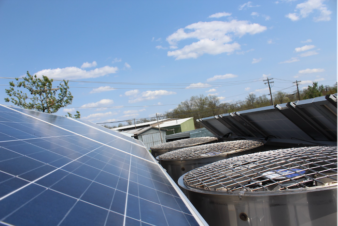 The 2012 presidential election had a few common themes, and one of those main themes was Solyndra. The failed company received a half a billion dollars that was lost when they filed for bankruptcy. Solyndra, and the solar industry became a punching bag. Well, 2013 the solar industry decided to punch back.
The 2012 presidential election had a few common themes, and one of those main themes was Solyndra. The failed company received a half a billion dollars that was lost when they filed for bankruptcy. Solyndra, and the solar industry became a punching bag. Well, 2013 the solar industry decided to punch back.
2013 saw the solar industry grow at an unprecedented rate because of two things. 1) A insane drop in the price of systems, since 2011 the price of a solar system has fallen 60% and 2) financing has gotten more creative and more productive. Third party financing has allowed companies to lease home and business owners solar systems at a cheaper rate. This type of financing has helped the number of businesses and homeowners that want to add stability to their energy costs do so in an environmentally friendly (and cheaper) way.
Solar energy has come a long way and isn’t just for hippies anymore. Initially invented to help telephone lines operate, and later refined for the space program, solar is ever so close to being on every block. California is leading the charge with very good incentives and tax credits, while states like New Jersey, New Mexico, Minnesota and Georgia are building bipartisan programs that will help support the long-term stability for ratepayers and the utility grid.
So why solar, why now? For one, jobs. Many electricians, roofers, construction workers and carpenters have skills to install solar panels, it is just getting the training to them. Many nonprofits, like the Midwest Renewable Energy Association offer training to get workers with skills the added abilities they need to become a solar installer. Technical colleges are also going heavy into the solar game. With over 143,000 people working in a solar related job in the US, and the next 12 months is expected to grow by another 15%, there are plenty of opportunities for under and unemployed.
Secondly, consumers. Consumers are demanding options from fossil fuels and unpredictable energy costs. Natural gas and fracking look great on paper, but we are now in a global energy market, and natural gas will go to the highest bidder. It is the same with coal. Solar is a great deal, competitive now with fossil fuels, and will continue to improve as technology advances.
Nick Korth is marketing coordinator for Caleffi North America.




Join the conversation: